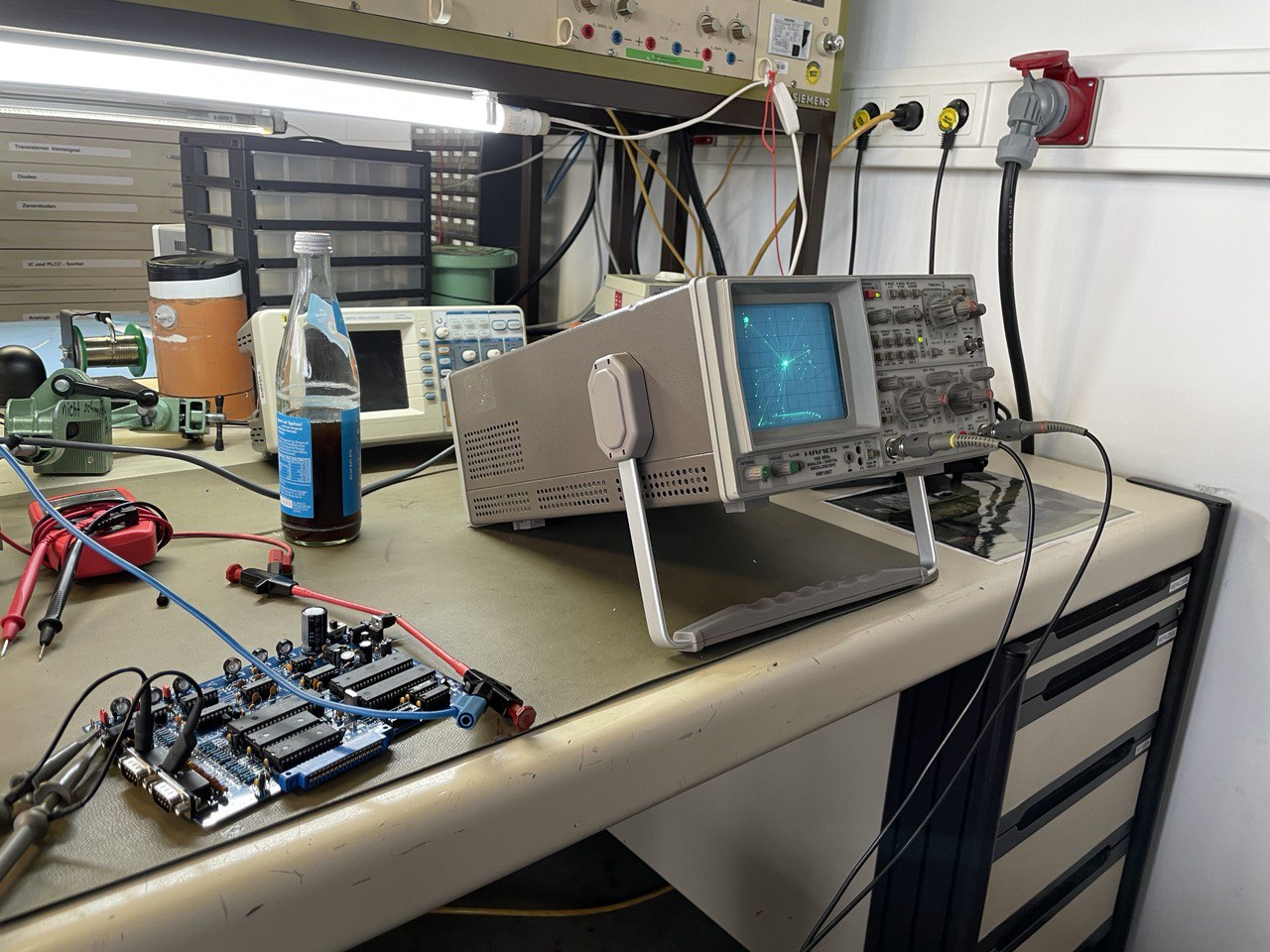Scopetrex
Since I started hacking on computer hard- and software in the 1980s, Motorola's 6809 processor is one of my favorite 8-bit CPUs. The 6809 is the last generation of Motorola's 8-bit CPU family, which started with the 6800 in 1974 and also was used in a number of microcontrollers of the 6805, HC11 and 9S12 families. The latter are still used in automotive applications today. If you know the 6502, the 6809 feels quite familiar, since it has an identical bus interface and very similar assembler programming model without some of the constraints of the 6502 such as an 8-bit stack pointer or a lack of 16-bit address registers. This is not really surprising, since a number of Motorola 6800 engineers left the company to develop the 6502 and then joined MOS.
However, the 6809 only came to the market in 1978 - only a year before the 68000 - and thus was quite late (and also rather expensive compared to the 6502 and Z80). Only a few home computers used the processor, e.g. the Dragon 32 and 64, the Tandy Color Computer and Thompson's MO5 and TO7.
Another system which used the 6809 was a quite special game console, the Vectrex. Instead of a standard raster-based screen, the Vectrex used its CRT as a vector display by controlling the X and Y deflection as well as the intensity of the CRT's electron beam directly. This is done by generating analog voltages for the X and Y position using an 8-bit digital-to-analog converter (DAC0808). Since DACs were quite expensive back then, the single DAC analog output is multiplexed using a CD4052 analog multiplexer to the various connectors. The rest of the Vectrex hardware is rather simple. A 6522 VIA connects to the DAC and some control functions and a AY3-8912 chip generates sound and provides another 8-bit port to interface to the Vectrex controllers. The remaining chips are an 8 kB ROM, 1 kB of SRAM (32 kB in the Scopetrex), some 74-series glue logic and a number of op-amps and other analog chips to generate the analog signal outputs.
Vectrexes were only built for about two years and unfortunately have become highly sought after (read: expensive) collector's items. Luckily, since the Vectrex uses only standard components, it is rather simple to build a clone. The software situation is also quite nice, since Jay Smith, then head of Smith Engineering (the designer of the Vectrex), allowed new hard/software development on a fee- and royalty-free basis and has also allowed duplication of the original Vectrex software on a not-for-profit basis.
Such a Vectrex clone is available in form of the Scopetrex by TubeTime. This is not a 100% replica since it uses a different PCB form factor and a 32 kB SRAM instead of the original 1 kB, but is perfectly compatible with all original software. It's a good project to get started with a more complex hardware build if you have some soldering experience and most of the parts are still available new from vendors such as Digikey or Mouser. The 6809 CPU (you will need at least the 1.5 MHz version 68A09, a 68B09 will also work fine - both the versions with internal clock generator and the one without that has the "E" suffix can be used) and the sound chip (a AY3-8910 or YM2149 can also be used) can be easily found on aliexpress.
My Vectrex build worked out of the box, now I only need to find a suitable vector display. You can use an oscilloscope in X-Y mode, but most modern scopes no longer feature a Z (intensity) input, so the display is disturbed by vectors which should not be drawn (intensity = 0). If you have an old analog Hameg 203, this will work nicely... A picture of the successful bringup is shown below.
By concidence, a colleague in Germany has also started building Scopetrexes. Small world...
